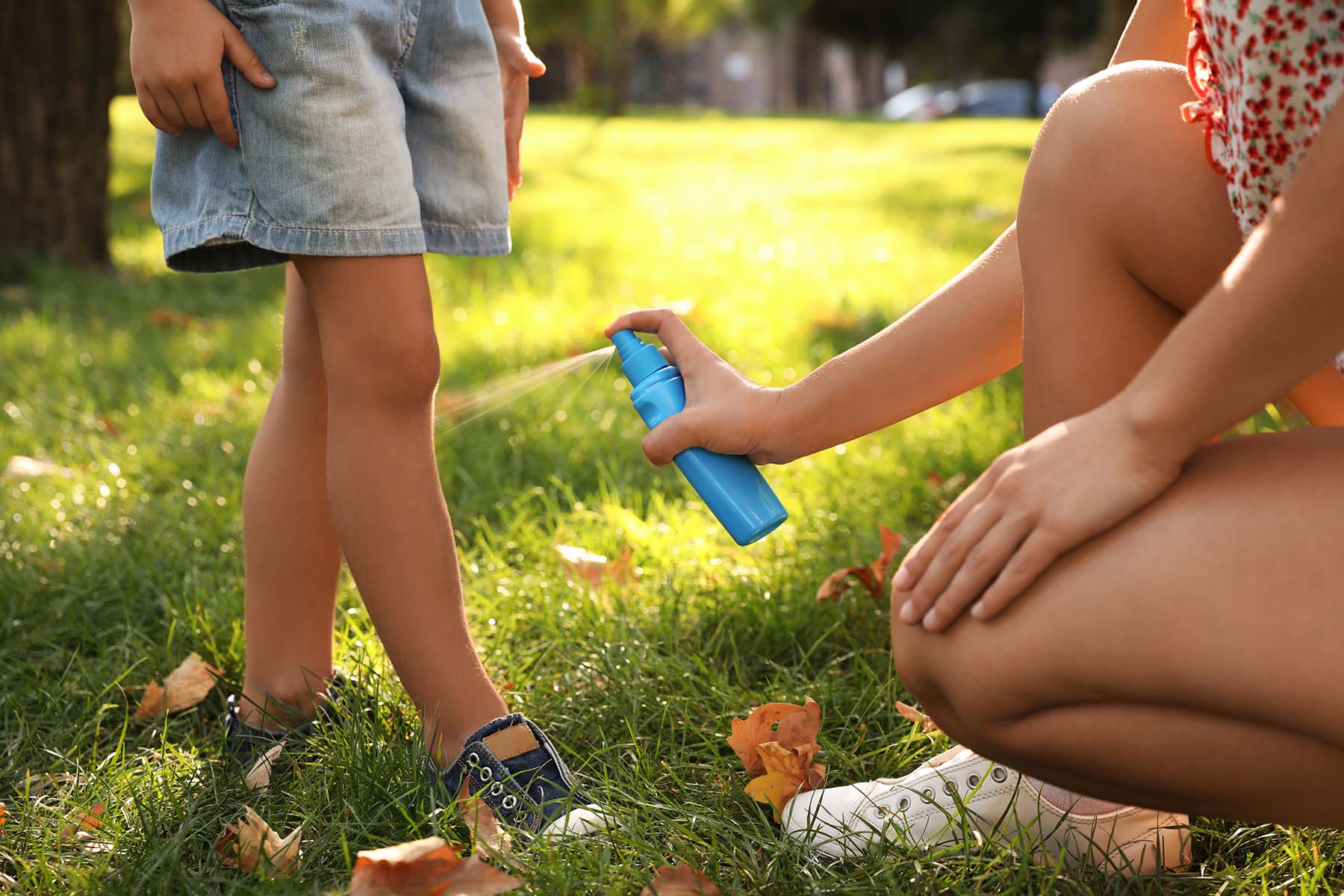Tips to Keep Mosquitoes Away

If you’re one of the unfortunate people who qualifies as a mosquito magnet, chin up. There are some effective ways to prevent bites if you’re consistent and careful. That said, skeeters are tenacious. They’re ubiquitous — and, in some cases, dangerous.
First, a primer on those pesky bugs. There are more than 3,000 species of mosquitoes, 50 of which call South Florida home. Some 98% percent of them bite, and, yes, it’s only the females who want our blood because certain nutrients in it help with egg-laying.
Mosquitoes live everywhere, except in Iceland and Antarctica.
They love warm, wet environments (South Florida!) but are no strangers to colder climes. John C. Beier, Sc.D., Chief of the Environment and Public Health at the University of Miami, says we don’t even qualify as the worst region for the pest. And he knows a thing or two about mosquitoes.
“The worst mosquitoes [I’ve experienced] were in Alaska in the tundra as the ice was melting,” he says. “It was a swarm.”
Most skeeters’ bites are harmless, but a few can be dangerous.
In South Florida, two species are known to be disease carriers.
The Aedes aegypti spreads yellow fever, dengue, chikungunya, Mayaro and other viruses. It was the cause of the 2016 Zika epidemic that affected many pregnant women and their babies.
The Culex mosquito, also a local resident, is responsible for the West Nile virus, Japanese encephalitis, filariasis and avian malaria.
“Mosquitoes,” says Dr. Beier, “can bite you anywhere at any time. You have to be prepared for that. Luckily, Miami-Dade has a good control program.”
Miami-Dade County employs inspectors to keep tabs on the bugs. In addition to truck and aerial spraying, residents can request an inspection report by calling 311 or visiting the agency’s website.
Dr. Beier gives top marks to the department’s “Drain and Cover” program for preventing bites and the spread of disease.
You, too, can do plenty. Here are Dr. Beier’s suggestions:
Use bug repellant.
Like other experts, he recommends brands with DEET (N, N-diethyl-m-toluamide). Another effective ingredient is picaridin (KBR 3023), but it’s not as common as DEET. The higher the concentration of DEET, the longer lasting the protection.
Read labels carefully to understand how often you should reapply.
Formulas with varying percentages of DEET can provide protection from two hours to 10 hours. And when using sunscreen, apply the sunscreen first and then the repellant.
Repellants with DEET are safe for children and pregnant women, according to the U.S. Centers for Disease Control and Prevention. They should be applied to exposed skin, with extra attention to your extremities, such as legs and arms.
“You can put it on your face but don’t spray it on,” Dr. Beier says. Rather, spray it on your hands and then spread it on your face but never on (or around) your mouth and eyes. Don’t bother spraying your clothes.
Wear long sleeves and long pants.
Sure, it’s hot, but fabric coverage provides a good barrier. As for the color of the clothes, Dr. Beier recommends avoiding dark shades. They seem to be more attractive. Also, some like to treat their clothing items with permethrin. Some clothes are already treated with permethrin and are available at camping or outdoor sports stores. Dr. Beier does not spray it on his clothes, but he says that a synthetic insect repellent is often used on bed nets in other parts of the world. A word of caution: Do NOT use on the skin.
Avoid being outside at dawn and dusk, when mosquitoes like to feast.
If you must, try to stay in the light. Mosquitoes prefer shaded areas. Keep moving. Mosquitoes prefer a stationary target.
Keep cool and clean.
Chemicals in our sweat are attractive to skeeters. Interestingly enough, they also love the CO2 we emit when we talk. Some studies suggest perfume may also attract them, so you might want to avoid these, too.
Drain any standing water around the outside of your house.
Empty kiddie pools, water buckets, birdbaths and garbage cans. Mosquitoes, Dr. Beier says, need standing water to lay their eggs, so “you don’t want anything that can collect water.”
Use a fan when outdoors.
That interrupts their flying patterns.
Use mosquito nets.
Though they’re not very popular in the U.S., Dr. Beier says they’ve proven quite effective in other countries.
Treat mosquito bites with an itch-relief cream, such as calamine or aloe or other over-the-counter products. Scratching only makes the bite look worse, and it can bring on an infection.

Ana Veciana-Suarez is a regular contributor to the University of Miami Health System. She is a renowned journalist and author who has worked at The Miami Herald, The Miami News, and The Palm Beach Post. Visit her website at anavecianasuarez.com or follow @AnaVeciana on Twitter.
Tags: aedes mosquitoes, bite humans, Dr. John Beier, mosquito borne diseases, mosquito breeding sites, mosquito trap, transmit diseases
